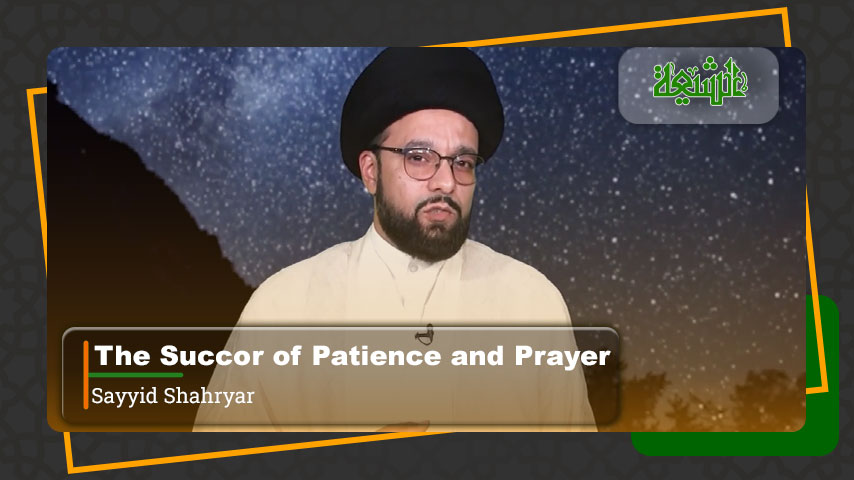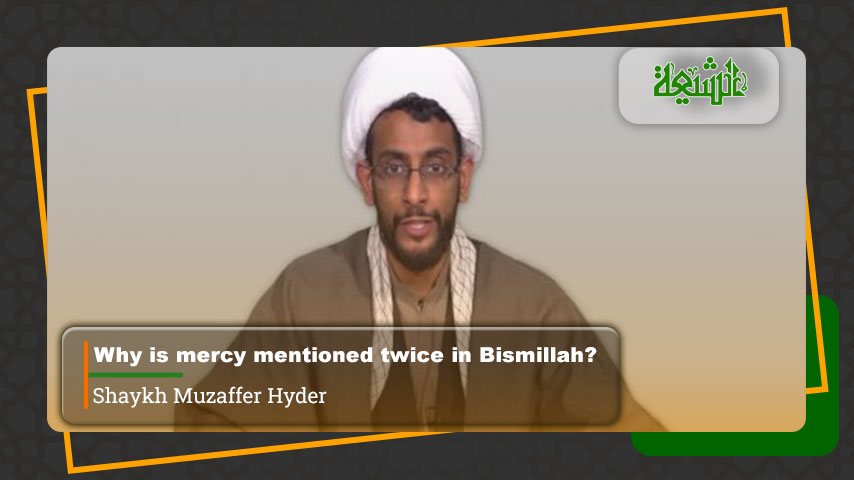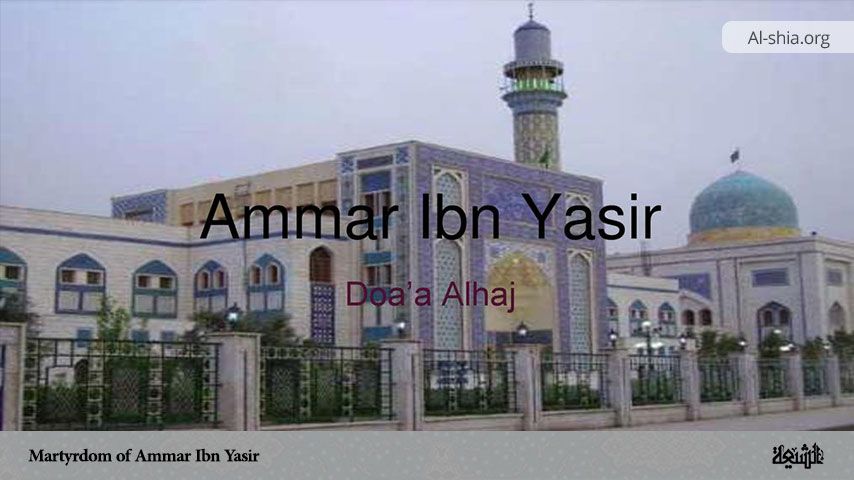Muhammad ibn Abi Bakr was the son of the first caliph and one of the closest companions of the Commander of the Faithful, Ali ibn Abi Talib (PBUH), who was appointed as the governor of Egypt during the caliphate of the latter. After the demise of Abu Bakr, Muhammad ibn Abi Bakr was raised in the house of Imam Ali (PBUH). The Imam loved him so much to such an extent that he was considered his own son. Moreover, the place Muhammad ibn Abi Bakr had in Imam Ali’s heart is sometimes compared to that of Abu Dhar in the heart of the Holy Prophet (peace be upon him and his family).
The objective of this study is to examine the historical circumstances, political dynamics, and religious implications surrounding the martyrdom of Muhammad ibn Abi Bakr. It seeks to analyze his role in early Islamic history, his political and spiritual alignment with Imam Ali ibn Abi Ṭālib, and the factors that led to his tragic death, thereby highlighting the significance of his martyrdom within the broader context of the first Islamic civil wars (fitan), and to assess how his legacy has been remembered and interpreted in both Sunni and Shia traditions.
His Birth and Lineage
According to historical reports, Muhammad ibn Abi Bakr was born in the month of Dhul-Qa’dah, 10 A.H [corresponding to February 632][1] in a place known as Dhu l-Hulayfa (18 km from the city of Medina on the way to Mecca) when the Messenger of God (PBUHH) was on his way to Mecca for his Farewell Pilgrimage[2].
His father was Abu Bakr ibn Abi Quhafah, the first caliph, and he passed away when Muhammad was only two years and several months old. His mother was Asma’ bint ‘Umays, who was one of the prominent women of early Islam. She was first married to Ja’far ibn Abi Talib, and after his martyrdom, she later married Abu Bakr[3].
After the death of Abu Bakr, Asma’ thereafter married Imam Ali (PBUH), and thus he came to live in the house of Imam Ali and was raised by him[4]. Muhammad ibn Abi Bakr was deeply familiar with the Imam’s way of life and noble qualities, which inspired in him profound affection for the Imam. In return, the Imam (PBUH) held Muhammad in great love and used to affectionately refer to him as ‘my son’[5]. In addition, Imam Ali (PBUH) referred to Muhammad ibn Abi Bakr in the Nahj al-Balagha as “my friend” and “my own child”, thereby indicating his distinguished status before the Imam: “He was my friend, and I raised him like my own child[6].
Personality of Muhammad ibn Abi Bakr
The majority of early Islamic historical sources attest to Muhammad ibn Abi Bakr’s integrity, piety, and noble character. He was a devout Muslim who remained steadfast in his support of the rightful Imam of his era, Ali ibn Abī Ṭālib (PBUH), despite the fact that his sister ʿĀʾisha stood in opposition to ʿAli during the Battle of Jamal. Though not counted among the purified members of the Prophet’s Household (Ahl al-Bayt), Muhammad ibn Abi Bakr distinguished himself as a man of virtue and was regarded as the purest and most honorable figure within his own family. In a statement of Imam Ali (PBUH) regarding Muhammad ibn Abi Bakr, he said: “May Allah forgive Muhammad! He strived as much as he could and fulfilled his duty. Muhammad always wanted good for people. He would accept criticisms and would ask people to inform him of any wrong conduct they may notice from him[7].”
The position Muhammad ibn Abi Bakr held in the heart of Imam ʿAli (PBUH) has been likened to the place Abū Dharr occupied in the heart of the Prophet (PBUHH). He was counted among the close companions and devoted disciples of the Imam[8]. Muhammad ibn Abi Bakr firmly believed that the first three caliphs preceding Imam ʿAli had infringed upon his rightful claim to the caliphate. To him, Imam ʿAli (PBUH) was the foremost believer in the Prophet (PBUHH) and his most loyal supporter throughout his lifetime. Muhammad ibn Abi Bakr also regarded the struggle against Muʿāwiya not as a worldly conflict, but as a battle waged sincerely for the sake of God.
The Circumstances of His Martyrdom
There are different viewpoints among historians on how Muhammad ibn Abi Bakr was martyred. His martyrdom represents one of the tragic episodes of the First Fitna, reflecting both the intensity of political rivalry and the harshness of Muʿāwiya’s campaign to consolidate power. After Imam ʿAlī (PBUH) appointed Muhammad as governor of Egypt, his position was soon threatened by Muʿāwiya’s attempts to seize the province, which was of great strategic importance.
In 38/658, Muʿāwiya dispatched ʿAmr ibn al-ʿĀṣ with a strong force to wrest Egypt from Muhammad’s control[9]. Despite Muhammad’s efforts to rally support, he found himself abandoned by many of the local tribal factions, leaving him isolated in his defense of the province[10].
Muhammad alone sought refuge in a ruined place, where he was found and killed by Mu’awiya ibn Hudayj, one of the chiefs of the Deserters, and his body was burned by him[11]. Some have said that he was killed by Mu’awiya ibn Hudayj during the battle.
However, the date of his martyrdom is reported to have been Safar, 38/July 658[12]. When the news of his martyrdom reached Imam Ali (PBUH), the Imam wept and said: “He was a righteous servant for Allah and a righteous son for us[13].”
It is also reported that after Muhammad’s martyrdom, his sister Aisha would constantly curse Mu’awiya ibn Abi Sufyan, ‘Amr ibn al-‘As, and Mu’awiya ibn Hudayj. Muhammad’s mother, Asma’, is also reported to have died as a result of grieving for his son[14].
Regarding the burial place of Muhammad ibn Abi Bakr, it is reported that he was buried outside Fustat in a mosque called Zimam (in Egypt), but some believe that only his head was buried there.
Political Consequences of His Martyrdom
The martyrdom of Muhammad ibn Abi Bakr in Egypt had significant repercussions for both Imam ʿAli (PBUH) and the broader political landscape of the Muslim community. His brutal killing not only deprived Imam ʿAli of a loyal and trusted supporter but also marked the loss of Egypt, a province of immense strategic and economic importance. According to al-Ṭabarī, the fall of Egypt to Muʿāwiya’s forces in 38/658 shifted the balance of power decisively in favor of the Umayyads, allowing Muʿāwiya to consolidate his position in Syria and extend his influence westward[15].
Sunni sources also acknowledge the consequences of Muhammad’s death. Ibn al-Athīr notes that his killing “strengthened the hand of Muʿāwiya” and deprived ʿAlī of one of his most loyal governors[16]. From both Sunni and Shia perspectives, therefore, the martyrdom of Muhammad ibn Abi Bakr is remembered not only as a personal tragedy for Imam ʿAli but also as a turning point in the struggle between the Umayyads and the supporters of the Ahl al-Bayt.
Legacy of Muhammad ibn Abi Bakr
The legacy of Muhammad ibn Abi Bakr remains a subject of reflection across both Sunni and Shia traditions, though each interprets his role within the context of its own historical and theological framework. Shia historians remember him as one of the most loyal companions of Imam ʿAlī (PBUH), a man whose devotion to the Ahl al-Bayt transcended his familial ties to those who opposed the Imam.
According to al-Majlisī, he portrays him as one of the “pure companions” whose sacrifice stands as a testimony to his sincerity in defending the rightful Imam[17]. Similarly, Ibn al-Athīr, however, acknowledges his bravery and commitment, remarking that he was remembered for his sincerity and uprightness despite his tragic end[18].
Over time, Shia communities in particular elevated his status as a symbol of loyalty to Imam ʿAli. His memory is invoked alongside figures such as Mālik al-Ashtar and Ammar ibn Yasir, companions whose sacrifices are seen as essential to preserving the integrity of the Imamate against Umayyad aggression. In contrast, Sunni historical writings typically remember him as a figure caught in the political upheaval of his era, but still respected for his noble character and early dedication to Islam.
Conclusion
The martyrdom of Muhammad ibn Abi Bakr stands as a defining episode in the turbulence of the First Fitna, symbolizing both the price of loyalty to Imam ʿAli (PBUH) and the ruthless struggle for political supremacy in early Islam. His devotion to the Imam, despite his own familial ties to those who opposed him, highlights the depth of his conviction and the moral clarity that shaped his choices. While Sunni historians often present his life within the framework of political conflict, Shia tradition reveres him as a martyr whose sacrifice embodies unwavering fidelity to the cause of truth and justice. His tragic death in Egypt not only marked the loss of a loyal companion for Imam ʿAli but also shifted the political balance decisively toward Muʿāwiya. Thus, Muhammad ibn Abi Bakr’s legacy continues to be remembered as both a personal testimony of piety and courage and a turning point in the historical trajectory of the early Muslim community.
Notes:
[1] . Ibn Athīr, ʿAlī ibn Muḥammad (1409 AH). Usd al-ghāba, vol. 4, p. 326.
[2] . Ibn ʿAbd al-Barr, Yūsuf ibn ʿAbd Allāh (1412 AH). al-Istīʿāb fī maʿrifat al-aṣḥāb, vol. 3, p. 366.
[3] . Ṭurayḥī, Fakhr al-Dīn (1362 Sh). Majmaʿ al-Baḥrayn, vol. 1, p. 231 and vol. 4, p. 88.
[4] . Balādhurī, Aḥmad ibn Yaḥyā (1417 AH). Ansāb al-Ashrāf, vol. 1, p. 538.
[5] . Māmaqānī, ʿAbd Allāh (n.d). Tanqīḥ al-Maqāl fī ʿilm al-Rijāl, vol. 2, part 3, p. 58.
[6] . Nahj al-Balagha, Sermon 67.
[7] . Thaqafī al-Kūfī, Ibrāhim ibn Muḥammad (1395 AH). Al-Ghārāt, vol. 1, p. 226
[8] . Ḥirz al-Dīn, Muḥammad (1371 Sh). Marāqid al-Maʿārif, vol. 2, p. 246.
[9] . Al-Ṭabarī (1967). Tārīkh al-Rusul waʾl-Mulūk, vol. 4, p. 567.
[10] . Ibn Abī al-Ḥadīd (1965). Sharḥ Nahj al-Balāgha, vol. 6, pp. 52-53.
[11] . Al-Ṭabarī (1967). Tārīkh al-Umam wa l-Mulūk, vol. 4, p. 80.
[12] . Thaqafī al-Kūfī, Ibrāhim ibn Muḥammad (1395 AH). Al-Ghārāt, vol. 1, p. 285.
[13] . Shūshtarī, Nūr Allāh (n.d). Majālis al-mu’minīn, vol. 1, p. 278.
[14] . Ibn Abī al-Ḥadīd (1965). Sharḥ Nahj al-Balāgha, vol. 6, p. 88.
[15] . Al-Ṭabarī (1967). Tārīkh al-Umam wa l-Mulūk, vol. 4, p, 570.
[16] . Ibn al-Athīr (1966). Al-Kāmil fī al-Tārīkh, vol. 3, p. 218.
[17] . Muḥammad Bāqir al-Majlisī (1983). Biḥār al-anwār, vol. 32, p. 243.
[18] . Ibn al-Athīr (1966). Al-Kāmil fī al-Tārīkh, vol. 3, p. 220.
References:
- Nahj al-Balāgha
- Al-Ṭabarī (1967). Tārīkh al-Rusul waʾl-Mulūk. Beirut: Dār al-Turāth.
- Balādhurī, Aḥmad ibn Yaḥyā (1417 AH). Ansāb al-Ashrāf. Editors: Suhayl Zakār and Rīyāḍ al-Zirkilī. Beirut: Dār al-Fikr.
- Ḥirz al-Dīn, Muḥammad (1371 Sh). Marāqid al-Maʿārif. Editor: Muḥammad Ḥusayn Ḥirz al-Dīn. Qom: Manshūrāt Saʿīd b. Jubayr.
- Ibn ʿAbd al-Barr, Yūsuf ibn ʿAbd Allāh (1412 AH). Al-Istīʿāb fī Maʿrifat al-Aṣḥāb. Editor: ʿAlī Muḥammad al-Bajāwī. Beirut: Dār al-Jail.
- Ibn Abī al-Ḥadīd (1965). Sharḥ Nahj al-Balāgha. Beirut: Dār Iḥyāʾ al-Turāth al-ʿArabī.
- Ibn al-Athīr (1966). Al-Kāmil fī al-Tārīkh. Beirut: Dār Ṣādir.
- Ibn Athīr, ʿAlī ibn Muḥammad (1409 AH). Usd al-Ghāba. Beirut: Dār al-Fikr.
- Māmaqānī, ʿAbd Allāh (n.d). Tanqīḥ al-Maqāl fī ʿilm al-Rijāl. Najaf: al-Matbaʿa al-Murtaḍawīyya.
- Muḥammad Bāqir al-Majlisī (1983). Biḥār al-anwār. Beirut: Dār Iḥyāʾ al-Turāth al-ʿArabī.
- Shūshtarī, Nūr Allāh (n.d). Majālis al-mu’minīn. Editor: Sayyid Aḥmad al-Mūsawī. Tehran: Kitābfurūshī Islāmīyya.
- Thaqafī al-Kūfī, Ibrāhim ibn Muḥammad (1395 AH). Al-Ghārāt. Editor: Mīr Jalāl al-Dīn Ḥusaynī Armawī. Tehran: Intishārāt-i Anjuman-i Āthār-i Millī.
- Ṭurayḥī, Fakhr al-Dīn (1362 Sh). Majmaʿ al-Baḥrayn. Editor: al-Sayyid Aḥmad al-Ḥusaynī. Tehran: Murtaḍawī.



















Why is the name of abubakr is labeled as Abubakr Siddiq R.a????? Like why on the coverpage of this article. It should be MUHAMMAD R.A BIN ABUBAKR. Please remove that. Thank you
Thanks so much for your attention. Necessary action shall be taken